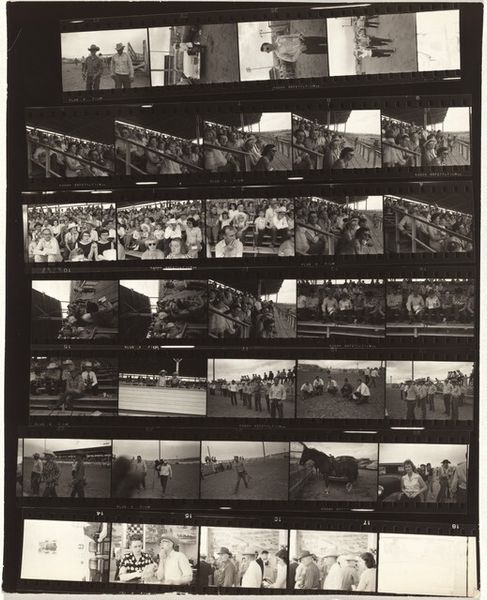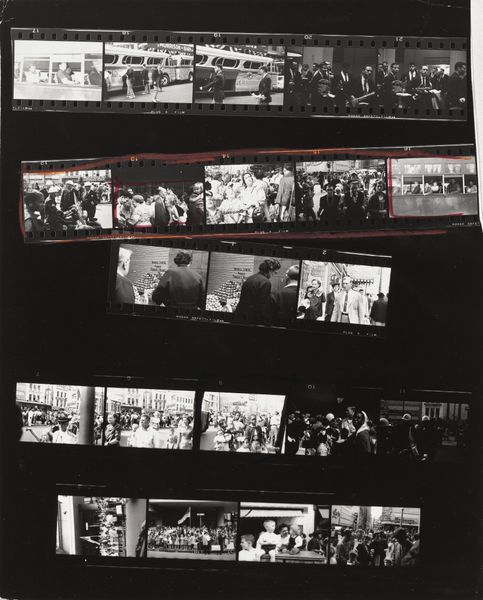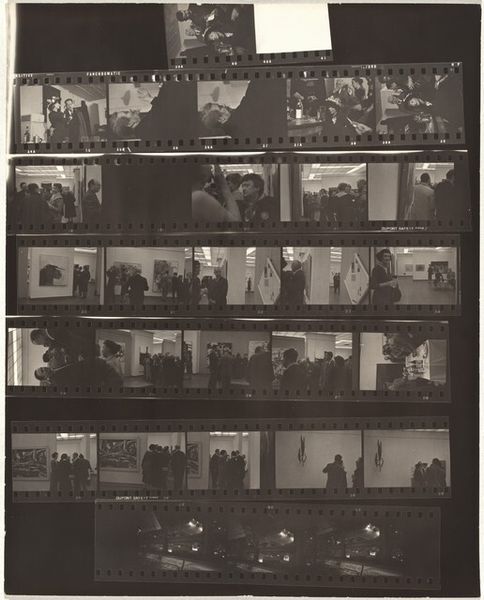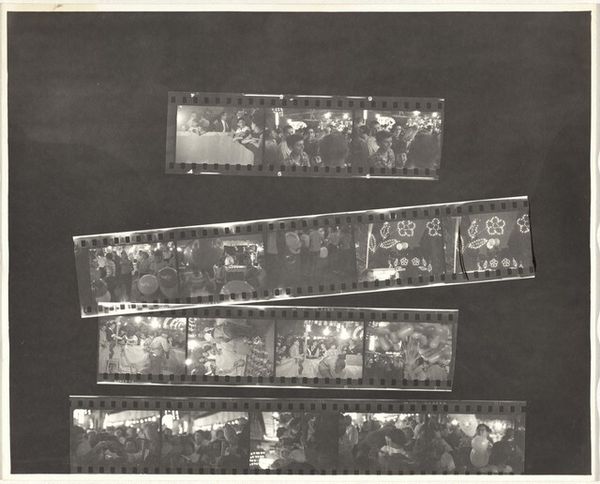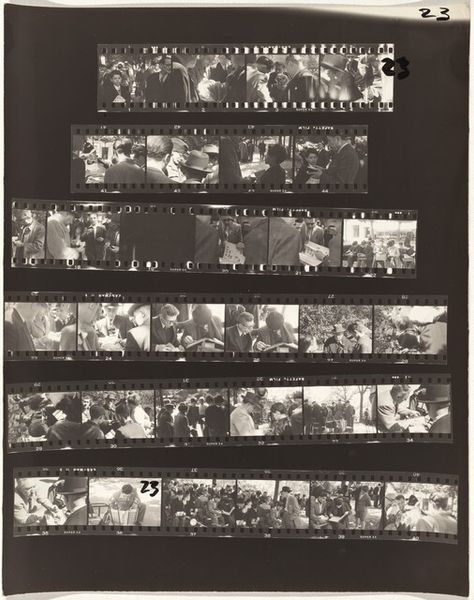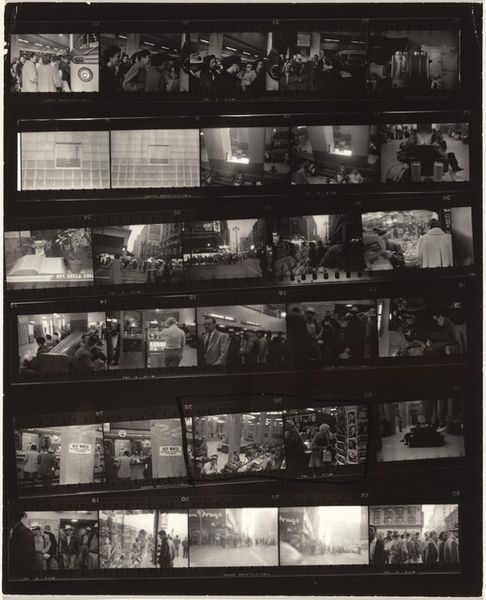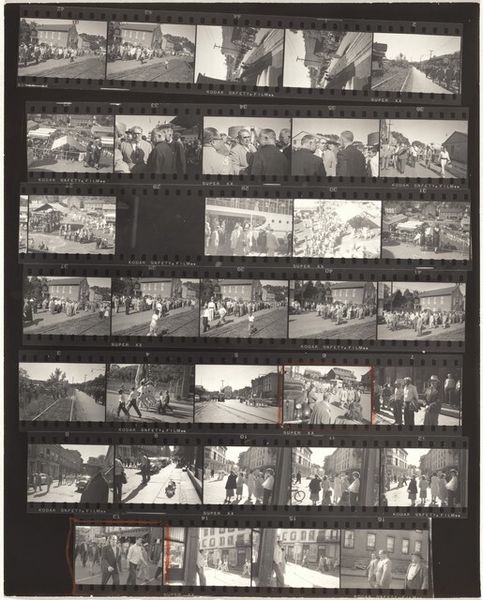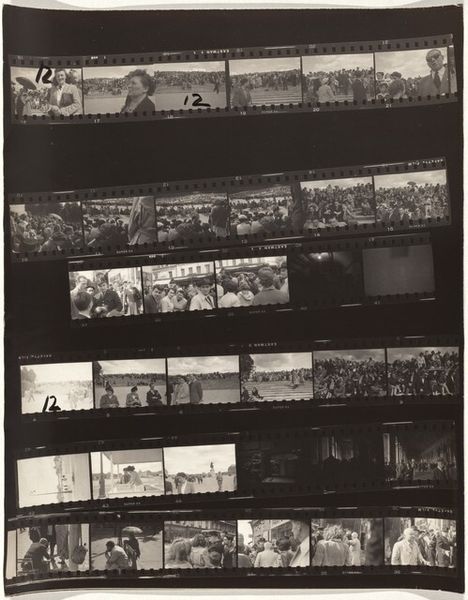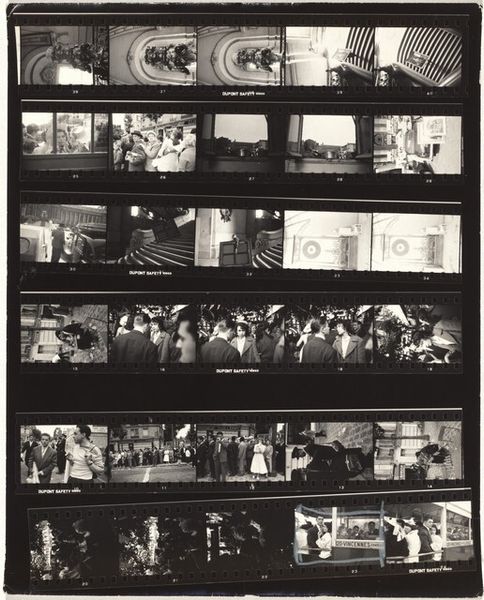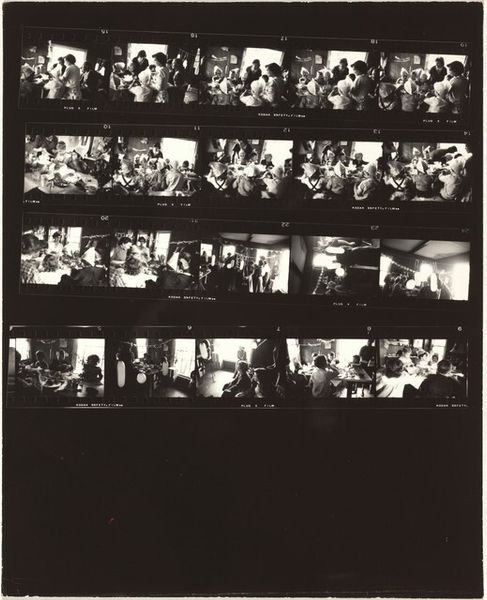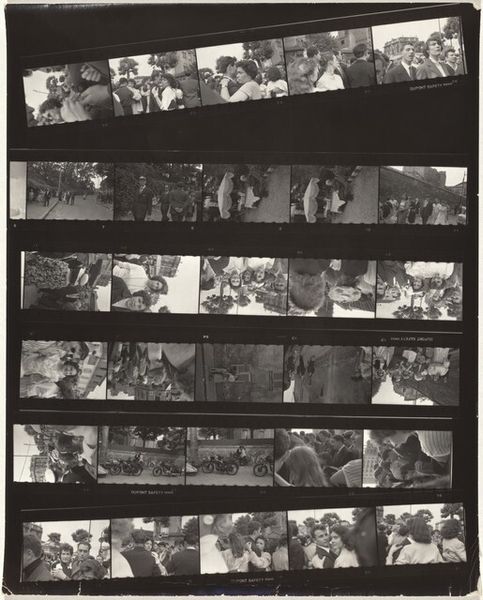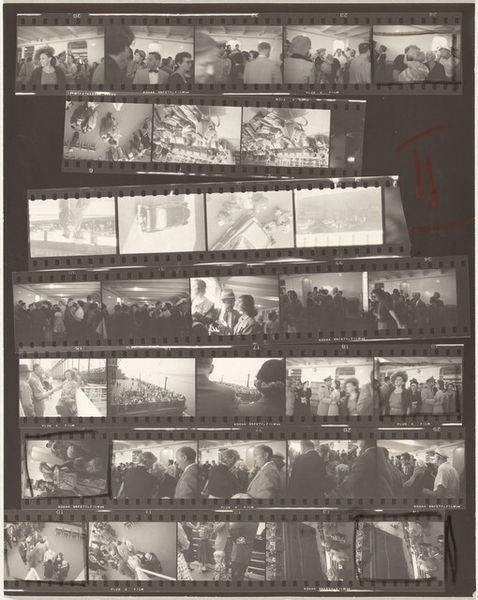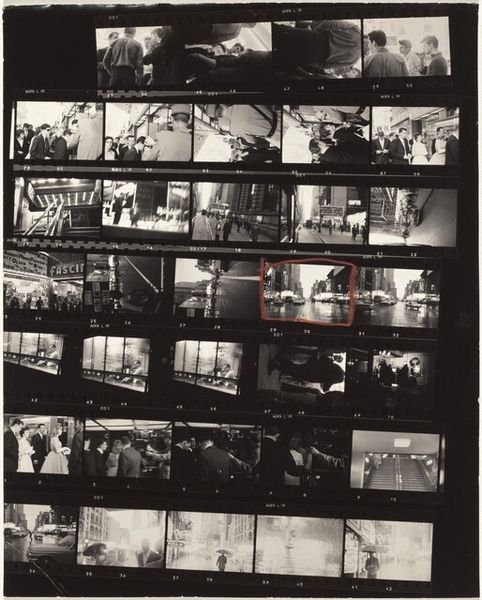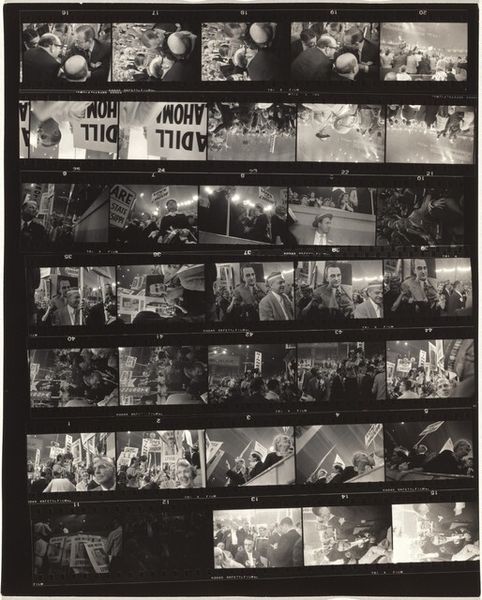
Dimensions: sheet: 29.6 x 21 cm (11 5/8 x 8 1/4 in.)
Copyright: National Gallery of Art: CC0 1.0
Curator: This gelatin-silver print, "Die Reportage (Reportage) 85-95," by Robert Frank, dated between 1942 and 1946, offers a series of glimpses into mid-20th century life. What catches your eye? Editor: A first impression? Well, it feels like a crowded flea market where you half want to buy something old and strange, and half want to flee because it's sensory overload! Visually, it's dense, lots of tiny narratives packed in. Curator: It's interesting that you perceive it that way. Frank's work often grapples with themes of societal tension and fragmentation. During the specified years, the backdrop of World War II and its immediate aftermath profoundly shaped social dynamics, impacting communities worldwide. The black and white medium enhances the gravitas, hinting at the socio-political uncertainties. Editor: Absolutely, the grainy texture adds to the mood. And all these little clusters of people – are they celebrating, protesting, or just going about their lives under a dark cloud? I sense a heavy mixture of conformity and hidden chaos. Like when everyone smiles for a family photo while silently fuming inside. Curator: I appreciate your insight. Considering that Robert Frank, a Swiss photographer of Jewish heritage, bore witness to a tumultuous era in Europe and the U.S., his photographs underscore the importance of capturing seemingly ordinary moments and how the documentation can offer nuanced commentary about the period's anxieties, power dynamics, and societal norms. Editor: And that "ordinary" stuff is what makes it so captivating, right? No staged drama, just raw slices of life – folks lining up, kids goofing off, banners hinting at something bigger going on. It’s like a visual poem made of whispered secrets and awkward angles. Curator: In viewing this and similar pieces, intersectional discussions arise organically concerning class, nationality, gender roles, and power—leading us to a more comprehensive comprehension of lived realities during such pivotal moments in time. It encourages dialogues concerning the impact collective experiences have on personal stories, enriching the understanding of identity against a broader backdrop. Editor: Yes, seeing through Frank’s lens lets us ponder. He wasn't just snapping pictures, he was weaving tales! Curator: Ultimately, “Die Reportage” is an incredible example of photography's power to weave personal observations into a wider commentary on historical forces that have marked lives globally. Editor: I like the way the work can let us explore stories beyond our immediate grasp, giving them fresh resonance.
Comments
No comments
Be the first to comment and join the conversation on the ultimate creative platform.
